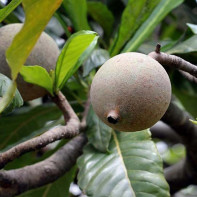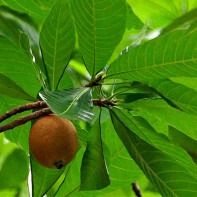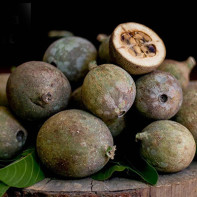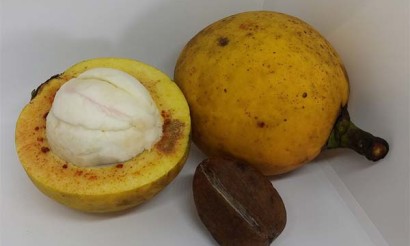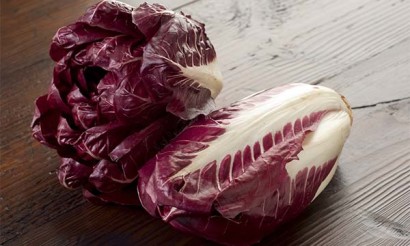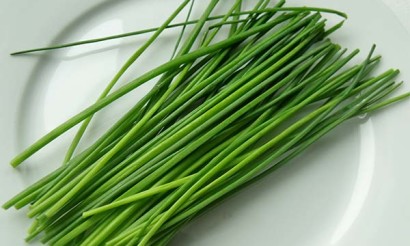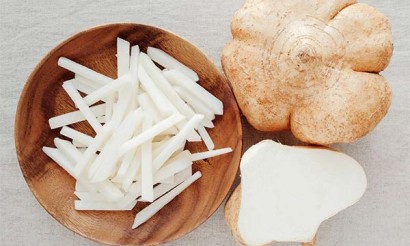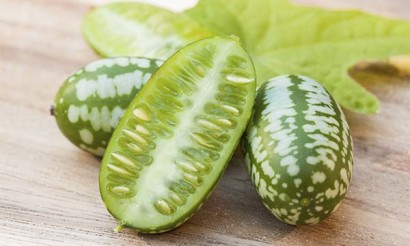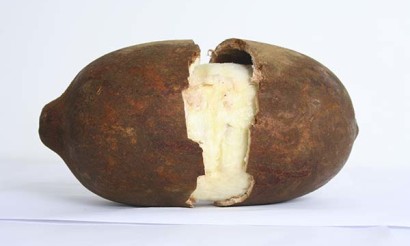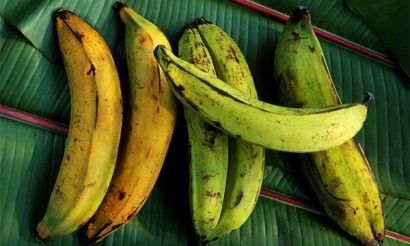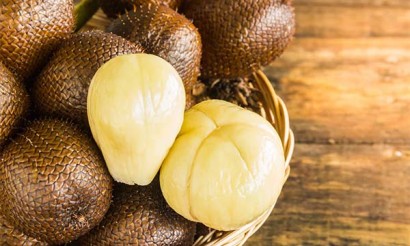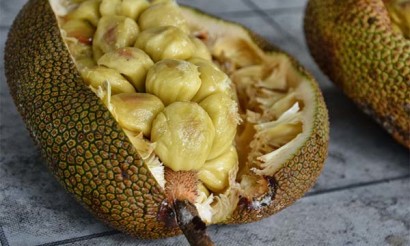Genipa: what kind of fruit is it and why is it useful?
The fruit tree of the genipa family of marigolds reaches a height of up to 30. This slender tree, with spreading branches, is interesting for its fruit, which the British nicknamed "marmalade box". Mainly for the fact that the skins are thick and dense, and the flesh is full of aromatic sweetness.
Genipa is a deciduous plant. The glossy oval leaves are edged with serrated edges. The leaves vary in width from 4 to 13 cm and are up to 33 cm long. A light vein is clearly visible in the middle.
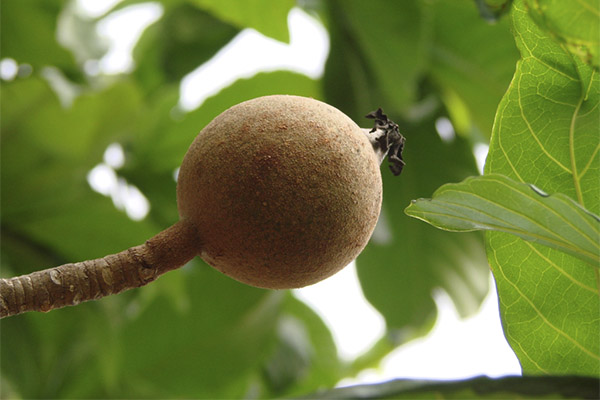
The inflorescences are large, 5-6 cm in diameter, of the rose-flower type, with 5 petals of yellow, red or white hue.
Fruits are oval in shape, 9-15 cm long and up to 9 cm wide. The skin is rough, as if lightly dusted with flour. Inside the fruit are light brown or yellow seeds. Interestingly, the inside pulp is cream-colored to begin with, but once in contact with air, it gradually turns yellow. And this is not all the unique qualities of the foreign fruit.
Where it grows
The wild genipa has occupied the territories of Cuba, Puerto Rico, the Virgin Islands, Guadeloupe, Trinidad - from southern Mexico, Colombia and Venezuela to Peru, Bolivia and Argentina. It is cultivated in the same area as an ornamental and fruiting plant. Genipa has long been cultivated in the Philippines. In some countries the tree is grown as a natural fence or hedge for pasture.
In the mid-1960s, Latin America began a genipa propagation project to reforest northeastern Brazil. Extensive plantations were established there. The fruit went to produce liqueurs and other foodstuffs, and the wood was used for local needs.
In the Old World the genipa is unknown. There have been attempts by Filipino enthusiasts to spread the culture to the United States. The tree grew at a planting station in Miami up to 6 m high, but it never flowered. A large tree was also grown at the Usadba Agricultural Research Center in Russia. It never bore fruit and was then killed by frost.
A taste test
This tree is grown for its fruit. They are used to make ice cream, jellies, jams, jams, juices and jams. Naturally they can only be eaten when they are overripe and soft. The taste, sour, resembles dried apples.
First, you need to tear a little thin skin of the fruit and suck out its jelly-like contents. All the seeds of the fruit and its peel are thrown away. If the seeds do end up in the mouth, they must be spat out.
An interesting detail: The juice of the genipa is colorless. But in the air it comes in contact with human skin and turns into a persistent dark blue dye, so it is used as a food coloring. Indians draw pictures on the body with this juice, and the color holds firm, up to three weeks.
Fishermen have found an equally exotic use for it. They prepare bait from unripe fruits, and the inhabitants of water bodies eagerly swim to the delicacy, being caught by the rod.
In hot tropical countries, genipa compote is relevant. This thirst-quenching beverage is drunk pure or added to wine. Another method is used in Puerto Rico. They cut the fruit, put it in water, and wait for it to start fermenting. Only when the mixture has fermented, fragrant fruits, berries, aromatic substances are added. In addition to quenching thirst, the infusion has a tonic.
You can simply chop the fruit, put it in a pitcher of water, add sugar, and you get a light drink for a hot day, reminiscent of lemonade. On the streets, vendors sell bottled concentrate with ice. In the Philippines, soft drinks are honored, as are jellies, sorbets, and ice cream. The pulp sometimes serves as a substitute for pectin to help gelling fruit juices. Villagers in Brazil make jam, syrup, soft drink, wine, and hard liquor from the fruit.
Research shows that the fruit has protein, carbohydrates, and malic acid. The caloric value is 113 kcal/100 g.
Therapeutic qualities of genipa
Genipa compote is not only pleasant to eat and effectively quenches thirst. It has more valuable qualities.
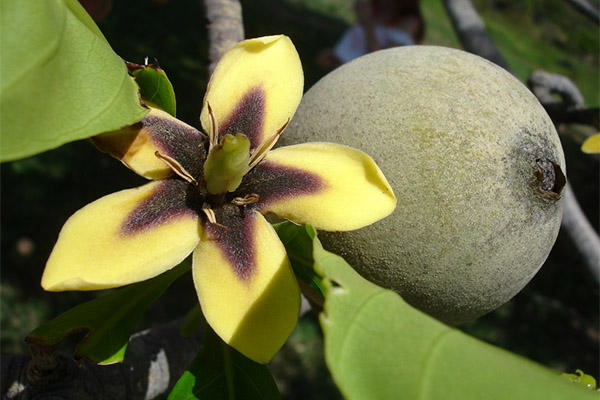
- The inhabitants of Central America have long adapted to use the compote as an expectorant for severe coughs. They also treat colds and sore throats. Decoction of flowers serves as an antipyretic, as does the juice of the leaves.
- The fruits are rich in calcium, phosphorus and ascorbic acid (vitamin C). It is logical that the fruit has on the human body has a restorative and rejuvenating effect.
- It is customary for the local population to resort to genipa fruit in cases of jaundice and use it as an anthelmintic.
- Diuretic action makes the fruit indispensable for edema of various etiologies, diseases of the urinary system.
- Folk medicine recommends crushing unripe fruits and use together with decoction of the bark in the treatment of pharyngitis and venereal diseases. In addition, the decoction of the root is also a powerful means of loosening.
- Genipa bark is also useful. It is rich in tannin, which makes it indispensable in the treatment of infectious skin diseases. If you make an incision on the trunk of the tree, a lightish resin that tastes sweet flows out of the bark. This is the very same powerful disinfectant. The resin is diluted with water and the resulting solution washed not only wounds and scratches, but even inflamed eyes.
- There is also an active antibacterial effect of genipa products on pathogenic microbes, that is, they act as an antibiotic. Crushed seeds can be used as a vomiting agent.
Contraindications
The experience of people who cultivate genipa, consume its fruits, studied the properties of flowers, bark, leaves, roots suggests that there are no contraindications. Possible only individual intolerance.
Where Genipu is used
In Guyana, the unripe fruit is used mainly as bait for fish. Wild and domestic animals eat the fruit that has fallen to the ground. The foliage serves as a good food additive for livestock.
The bark is often used in the processing of leather, serves to produce fiber. However, these threads are only good for coarse clothing.
Young wood is used for firewood and fence posts. Ten-year-old trees are used for lumber. The wood is yellowish white or even slightly pinkish, with barely noticeable streaks of reddish color. It is of good fibre, hard but resilient and strong. However, termites are very fond of this wood, which makes its durability questionable.
Genipa wood is used to make many kinds of household utensils and even carpentry. The flowers are a good honeybee carrier.
How to grow
Genipa can be propagated by seeds and cuttings. Seeds do not even need to be specially prepared. It is enough to place a seed in well loosened soil to a depth of half a centimeter. The place should be warm, above 23 degrees. The earth should be constantly moistened, but not make it wet.
Sprouts appear in 25-30 days. At the age of 6 to 12 months, they should be transplanted. The tree does not require attention, it survives and thrives well even in difficult situations.
If fruit growing is a priority, then the distance between the trees is 10-15 m. Fallen leaves serve to enrich the soil of the plantation.
The culture grows literally before your eyes. In three years, you have to wait for the first fruits. Most often the tree bears fruit once a year. But there are especially productive varieties that please their owners all year round. Genipa is sympathetic to overwatering and does well in periodically flooded soils, but it does not tolerate cold at all and in case of a slight frost does not survive, but dies.
That is why this crop is not found in mountainous areas where the weather is unstable and different from the hot and humid tropics.
Where to grow
The place should be chosen sunny, bright, if there is shade, then a little. Soil is preferable by reaction neutral or weakly acidic. Watering must be plentiful to keep the soil constantly moist in summer - just the case when it is better to overwater than underwater.
Fertilizing should be carried out at least twice a month, alternating organic and mineral fertilizers. In the winter fertilizing is not required.
An important requirement for the regime is warmth. In winter the temperature is kept at 15-20 degrees, in summer - the hotter the better. Of course, genipa can survive a short-term drop in temperature to 0, but it is better not to risk it.
Interesting Facts
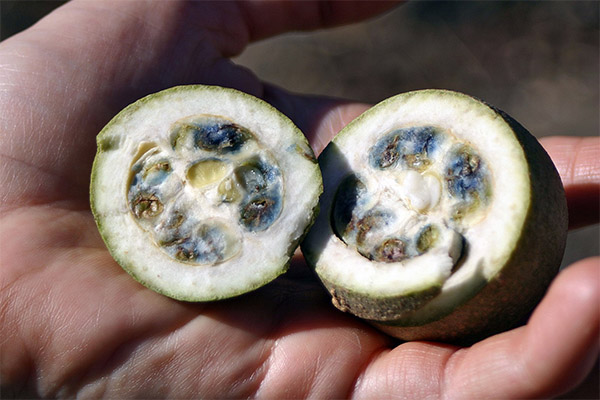
- In different countries, the genipu is called jagua, chibara, lana, vitu, maluco.
- Peruvian water bodies are inhabited by the parasitic catfish "kandiru". It literally paralyzes the local population with fear. It can swim into any, even the most intimate place of a person, and get a foothold there with sharp spines on the gills. The parasite feeds on blood and surrounding tissues, not only causing severe pain, but can be fatal. To extract it, you can't do without surgery. The juice of genipa fruit or burnt leaves can also help. Injection of these products to the site where the candiru is attached kills the fish, and it can then be extracted.
- Guatemalan Indians attribute sacred significance to the tree. They carry the fruit in their hands in certain rituals, hoping and believing it will save them from misfortune and disease.
«Important: All information on this site is provided for informational purposes only purposes only. Before applying any recommendations, consult a health care professional. specialist. Neither the editors nor the authors shall be liable for any possible harm caused by materials."

